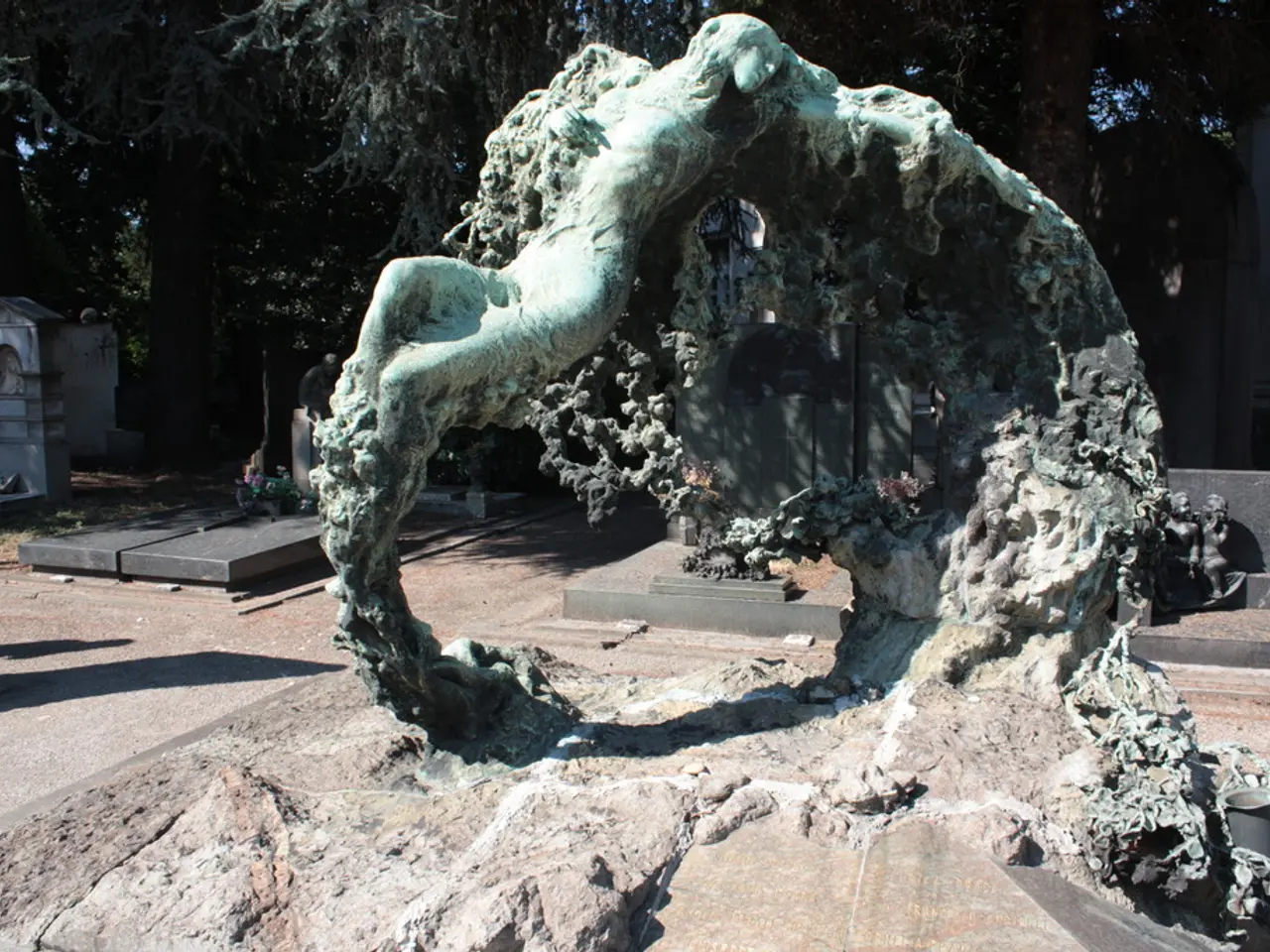Prehistoric Monumental Structures from the Deccan Highlands
In the heart of India, particularly on the Deccan Plateau, lie the enigmatic relics of a bygone era - megaliths. These large-scale stone structures, associated with mortuary, ritualistic, and commemorative functions, have long captured the interest of archaeologists and historians alike.
The cultural origins of these megaliths can be traced back to early South Indian prehistoric communities who engaged in ritualistic and burial practices. Scholars attribute these origins to a homogeneous population group, suggesting a reflection of the early South Indian society. The earliest commemorative and burial practices in the region appear to have begun in the neolithic-chalcolithic period (7000 B.C.E. to 3000 B.C.E.).
Megaliths were produced across the Deccan Plateau during the Iron Age (late second-early first millennium B.C.E.). Chamber tombs, consisting of a chamber built out of two or four vertical slabs with a horizontal capstone placed on top, were particularly an Iron Age development. These tombs have been found not only in the Deccan and southern India but also in the Vindhya and Aravalli mountain ranges, as well as in Assam and the Chotanagpur plateau.
The megaliths of the Deccan were among the earliest archaeological remains to garner interest from British colonial archaeologists. Today, scholarly interest in Deccan megaliths is growing, but many sites are under threat due to encroachment and urbanization.
Accompanying these sites, remains of water pools, sedimented terraces, and herding camps have been found. Megalith sites are generally accompanied by other material markers such as black and red ware ceramics, agate beads, carved steatite earrings, human and animal figures, copper and bronze artifacts, terracotta figurines, tortoise shells, lapis lazuli beads, and the remains of horsegram and ragi grains.
The book "The South Deccan Iron Age: Antecedents to Early Historic Andhradeśa" by Peter G. Johansen provides insights into the Deccan megaliths. For a comprehensive history of ancient and early medieval India, one can refer to Upinder Singh's book "A History of Ancient and Early Medieval India: From the Stone Age to the 12th Century". For a detailed analysis of society and civilization in early Deccan, the article "Nature of society and civilisation in early Deccan" by Aloka Parasher offers valuable insights.
Interestingly, not all megaliths are associated with burial practices. Some megaliths are used to track astronomical events, possibly in connection with seasonal crop cycles. This suggests a deeper understanding of astronomy and its connection with agriculture in ancient India.
Social hierarchy can be inferred through variations in the number of people buried, body treatment, and grave goods. Unchambered burials include pit burials, urn burials, and sarcophagus burials. These variations indicate a complex social structure, suggesting large-scale communal rituals and managerial skills were required to construct these megalithic sites.
The book "Ancient India: Identities, Boundaries and Cultural Practices" edited by H. Kadambi and D. A. Prasanna includes a chapter on Megaliths and Later Monuments, providing further insights into these fascinating relics of India's past. As we continue to unravel the mysteries of megaliths, we gain a deeper understanding of the societies that built them and the rich cultural heritage they represent.








